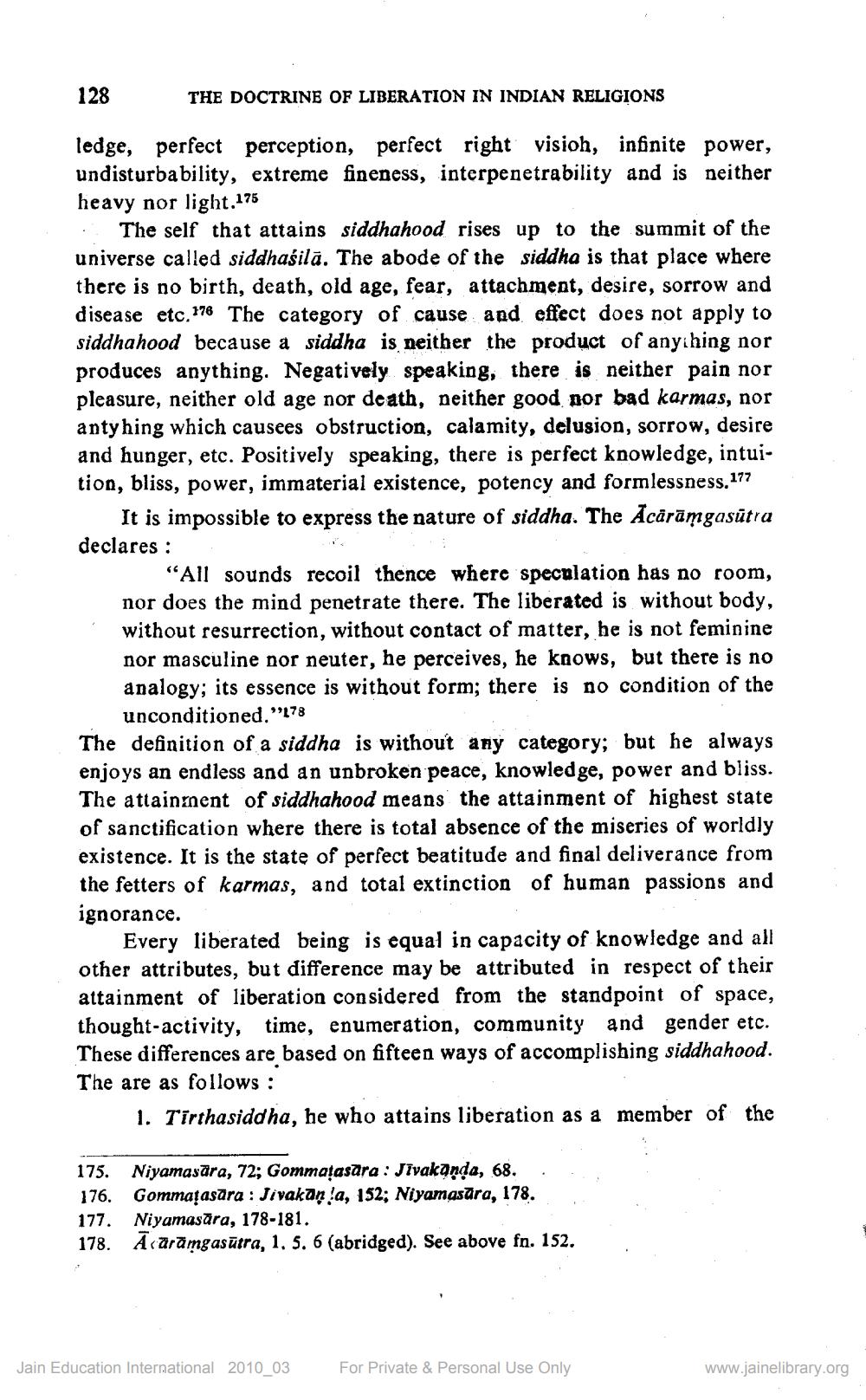________________
128
THE DOCTRINE OF LIBERATION IN INDIAN RELIGIONS
ledge, perfect perception, perfect right visioh, infinite power, undisturbability, extreme fineness, interpenetrability and is neither heavy nor light.175
The self that attains siddhahood rises up to the summit of the universe called siddhasilā. The abode of the siddha is that place where there is no birth, death, old age, fear, attachment, desire, sorrow and disease etc.178 The category of cause and effect does not apply to siddhahood because a siddha is neither the product of anyi hing nor produces anything. Negatively speaking, there is neither pain nor pleasure, neither old age nor death, neither good nor bad karmas, nor antyhing which causees obstruction, calamity, delusion, sorrow, desire and hunger, etc. Positively speaking, there is perfect knowledge, intuition, bliss, power, immaterial existence, potency and formlessness. 177
It is impossible to express the nature of siddha. The Acārāmgasūtra declares :
"All sounds recoil thence where speculation has no room, nor does the mind penetrate there. The liberated is without body, without resurrection, without contact of matter, he is not feminine nor masculine nor neuter, he perceives, he knows, but there is no analogy; its essence is without form; there is no condition of the
unconditioned."'178 The definition of a siddha is without any category; but he always enjoys an endless and an unbroken peace, knowledge, power and bliss. The attainment of siddhahood means the attainment of highest state of sanctification where there is total absence of the miseries of worldly existence. It is the state of perfect beatitude and final deliverance from the fetters of karmas, and total extinction of human passions and ignorance.
Every liberated being is equal in capacity of knowledge and all other attributes, but difference may be attributed in respect of their attainment of liberation considered from the standpoint of space, thought-activity, time, enumeration, community and gender etc. These differences are based on fifteen ways of accomplishing siddhahood. The are as follows:
1. Tirthasiddha, he who attains liberation as a member of the
175. Niyamasāra, 72; Gommatasära : Jivakanda, 68. . 176. Gommațasāra : Jivakanla, 152; Niyamasāra, 178.
152: Niyamasara, 178.
. 177. Niyamasara, 178-181. 178. Acaramgasūtra, 1. 5. 6 (abridged). See above fn. 152.
.
Jain Education International 2010_03
For Private & Personal Use Only
www.jainelibrary.org




